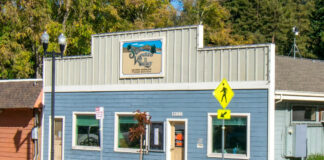Editor,
I have dove deep into political water issues. It interests me a great deal. Education and work experience gave me tools to create www.SCwatersolutions.com.
We need a “cushion” of water; a certain degree of stored water that can be used in the event of drought to stop over drafting. People fight water infrastructure progress; citing growth concerns or environmental damage. Doing nothing is far worse.
For example, Loch Lomond destroyed a large section of fish habitat. Imagine what would happen without it.
Randall Brown’s great book, “San Lorenzo Valley Water District: A History,” shows 30 years of no progress. We are living on the edge with no “cushion” and a ruined fish habitat.
A long-term drought will be devastating. It’s time to do something about it. Is it too complicated to agree on the maximum number of water connections?
This is the sustainable amount, including a “cushion.” For our children, incorporate this number into the General Plan — a critical step to design the best system. Restore the fish habitat. Low ground water is a huge factor; river dries up too quickly running over dry ground.
It would be a huge improvement on both the environment and the economy.
I am from Marin County. Somebody very smart decided to merge all the water agencies into one, the Marin Municipal Water District.
One large agency provides the ability to take big steps by minimizing overhead and allowing progress. Many people see this need. Finally, a start: the SLVWD/Lompico merger.
Again, there are skeptics promoting their ignorance by preferring inaction. The people of Lompico have done everything possible to make a sound acquisition. Lompicans will pay for a 100 percent upgraded system.
The only way to prove this is to do cost accounting, which I believe will show a 6 percent increase in revenue with no significant loss.
Let’s get out of this dogma of stopping mergers and construction improvements.
I urge SLVWD to accept the Lompico merger and expand further. Then, start doing something to restore the fish habitat, restore the ground water basin, and provide additional storage for droughts.
Bill Smallman, Felton












